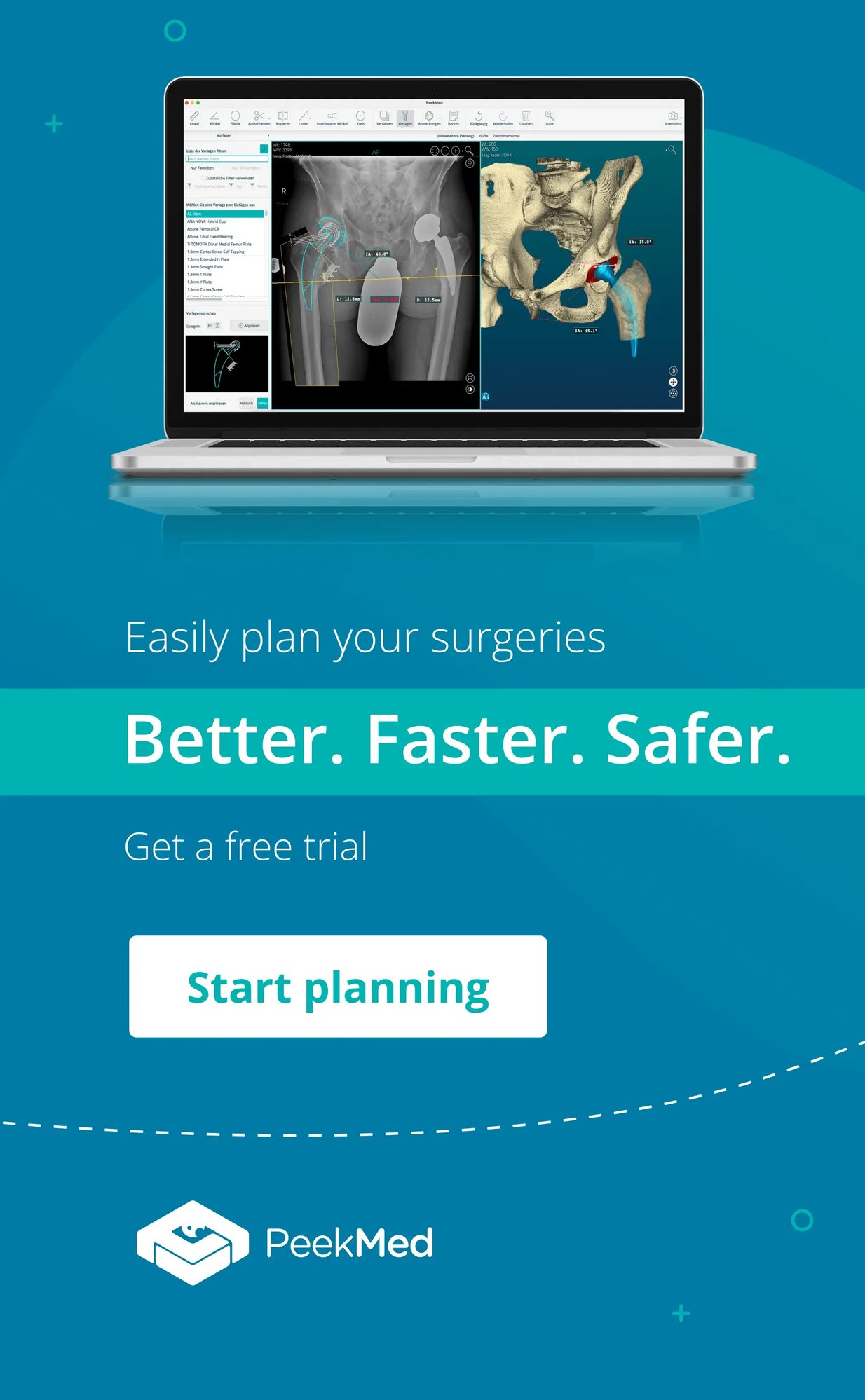PeekMed
From manual mastery to machine-guided precision surgery, robotic and navigational technologies are revolutionizing orthopedic surgery. Unlike conventional methods, which rely solely on the surgeon's expertise and manual skills, these technologies offer real-time imaging, intraoperative guidance, and automated assistance.
By augmenting human capabilities, both technologies set a new standard for surgical accuracy and patient safety. Let’s now explore what is robotic-assisted surgery and navigation tools and their synergistic potential.
Orthopedic Robotic Technology
Robotic-assisted surgery uses robotic arms guided by surgeons to provide mechanical precision and agility, allowing them to perform intricate tasks with submillimeter accuracy.
To provide such assistance, surgery by robot uses the following technology:
-
Surgical arms that hold specially made instruments;
-
A special camera that allows a 3D view of the surgical area;
-
A surgical console where the surgeon controls the whole procedure.
One of robotic surgery's benefits lies in its ability to enhance the surgeon's capabilities, allowing for more precise cuts, implant placement, and alignment adjustments.
Orthopedic Navigational Technology
Orthopedic navigational technology refers to the integration of surgical navigation systems to provide real-time imaging and guidance and track the instruments' position.
By leveraging advanced imaging modalities, such as CT scans and intraoperative fluoroscopy, navigational software offers 3D visualization of the surgical field, enabling precise preoperative planning and intraoperative guidance.
This technology not only enhances surgical outcomes but also minimizes complications, revisions, and postoperative pain, ultimately improving patient satisfaction.
Synergy of Robotic and Navigational Technologies
While robotic and navigational tools offer advantages individually, their true potential lies in their integration. By combining both, surgeons can achieve unprecedented levels of accuracy, efficiency, and patient-specific customization.
When combined, robotic navigation creates a seamless workflow that optimizes every step of the surgical process. Robotic arms guided by navigational cues can precisely navigate instruments and implants to their intended locations, ensuring optimal alignment, positioning, and tissue preservation.
Together, these technologies enable surgeons to perform complex procedures with greater confidence and consistency, ultimately improving patient outcomes and satisfaction.
Also, these technologies have benefits beyond the operating room. They allow for the collection of comprehensive data during surgery, which can be used for postoperative analysis, quality assurance, and further refinement of surgical techniques.
Practical Example
Imagine John, a 67-year-old man struggling with chronic knee pain. After exhausting conservative treatment options, he opts for a total knee replacement surgery.
With the help of a preoperative planning system, John's surgeon meticulously plans the bone resections tailored to his anatomy. John's digital 3D knee model is then uploaded into the robotic system's software.
On surgery day, the preoperative plan, along with real-time navigation data, will guide the robotic arm during the procedure. Here's how surgical robotics and navigation work together:
-
Bone Resection: With the surgeon referencing the pre-programmed plan on the screen, the robotic arm precisely executes the bone cuts, ensuring accuracy based on John's anatomy.
-
Ligament Balancing: While the robotic arm assists, the surgeon focuses on crucial ligament balancing. Navigation data displayed on a screen helps ensure optimal ligament tension throughout the procedure.
-
Implant Positioning: Guided by the robotic arm, the surgeon positions the prosthetic components with pinpoint accuracy. Navigation ensures proper alignment, reducing the risk of loosening or instability.
John's robotic surgery for knee replacement concludes successfully. With the help of these technologies, his surgeon has performed a highly precise knee replacement.
Challenges and Future Directions
Despite the immense potential of orthopedic robotics and navigational technologies, several challenges remain to be addressed.
Implementation costs, training requirements, and regulatory considerations continue to limit widespread adoption. Also, interoperability issues between different robotic and navigational platforms present challenges to seamless integration and data sharing.
Moving forward, continued advancements in software algorithms, imaging modalities, and robotic hardware will further enhance the capabilities of robotic and navigational systems, making them more accessible and versatile across a wider range of orthopedic surgical procedures.



